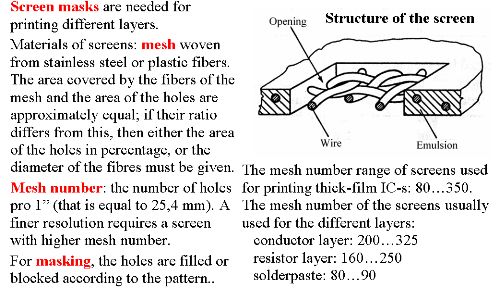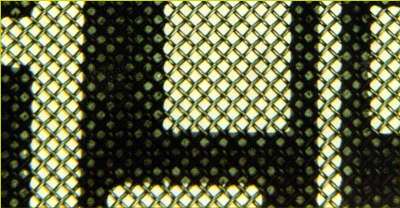 |
|
||
|
Screen Mask: the patterning tool for screen printing
In thick film technology the various layers are usually deposited by screen printing onto ceramic substrates, using special pastes or inks, and screen masks (stencil screens) to define the layer pattern. The screen is a woven mesh material made of stainless steel or plastic fiber. The screen mask is the screen with polymer (gelatin, called emulsion) or metal coating that fills unnecessary openings of the screen, thus results in a mask with well-defined windows (openings). The screen mask is stretched out by the screen frame that is made from metal, generally from aluminum. The frame with the screen mask is positioned parallel to the substrate, with a usual distance of 0.6 - Screen texture
Screen mask: a screen with patterned emulsion layer
The screen material is characterized by the thread diameter and the mesh count. The term "mesh" refers to the openings and fractional parts of an opening, per inch, counting from the center of any wire to a point exactly Conductor layers are printed using 200 - 325 mesh screens, resistors are prepared by 160 - 250 mesh screens and 80 mesh screens are used for solder pastes.
|
 Screen Printing
Screen Printing 



